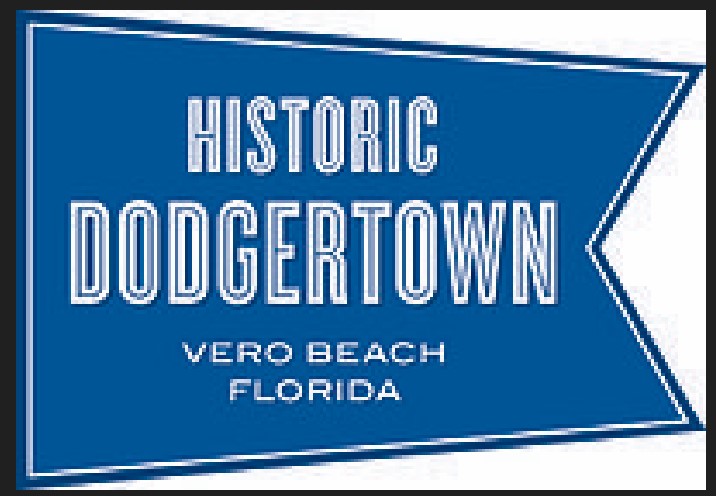
Branch Rickey had a problem after the 1947 season. It was finding a site suitable to house and train his plus 700 minor and major league players that was cost effective.
His Cuban and Caribbean fiasco had cost the team money in the spring of 1947. He had to house his black players in a different location than his white players to reduce as much racial tension as he could.
So he began looking around for a more permanent place to train his team. The team had been training at Pensacola and Sanford. Both places had been former military bases and offered housing and feeding.
Because of the desire to reduce racial tension and dealing with the south’s Jim Crow laws, the Dodgers basically trained in two different locations in 47. The minor leaguers were in Florida, and the Montreal Royals and the Dodgers in the Caribbean.
Bud Holman had a problem too and it was looming large for him. His problem was that the US Navy had decided to turn back the flight training base it had created out of Vero Beach’s prewar airport.
Holman had parlayed exceptional mechanic skills into first, a Cadillac dealership in Vero, then acres of orange groves and then cattle ranches. He then managed to convince Eastern Airlines to make Vero one of its stops on its flights up and down the east coast despite having little to offer except Holman’s excellent service. Holman wound up on Easterns’ board of directors.
The Navy had not used the base in nearly two years and its facilities, built only to last a short time, had begun to deteriorate. Holman had browbeaten the Navy into repairing the runway lights and making sure the airport’s seven runways were usable. But he had no idea how the airport could pay for itself and help the city of Vero Beach grow.
The experience of having his players in Pensacola in 1947, showed Rickey the value and advantages of former military bases as training sites. Buildings were already in place to feed and house thousands of men only a few years earlier meant the Dodgers were spared expensive construction. All the Dodgers needed to do was construct diamonds, batting cages, pitching mounds, sliding pits and similar facilities. He looked at several sites in Florida and one out in El Centro California.
Holman, who admitted he did not know much about baseball, heard Rickey looking for a former military base through a friend of one of Rickey’s daughters. He also tapped into friends in Eastern Airlines and General Motors.
Bavasi took a train ride down to Vero in late fall, 1947, to estimate the cost of converting it to the Dodgers needs and an overall inspection. Although the deal was not signed until December of 1947, Rickey was telling the Board of Directors that he was expecting a favorable deal for the next spring.
The original 5-year deal called for the Dodgers to pay 1.00 a year rent for 104 acres while taking over responsibility for maintaining the existing barracks facilities and being responsible for building their own training facilities. The City of Vero Beach, while giving up any significant revenue from the property, was hoping the publicity coming from spring training and the crowd of New York writers who would come with it would raise the city’s tourism profile, both in New York, and around the country.
For 1948, the new complex, which Rickey christened “Dodgertown”, was still a minor league facility. The Dodgers trained in the Dominican Republic where they received a $60,000 subsidy from the government. On their way north, the Dodgers stopped in Vero and played a couple of games against Montreal.
Still, the team lost money and the strain of racial relationships continued to plague the team. Sam Lacy, a writer for the Baltimore African-American, who covered all of Jackie Robinson’s early springs, says one of the reasons the Vero Beach complex was so appealing to the Dodgers, was that the Dodgers would provide a police service for their property, thus decreasing the likelihood of a confrontation between their growing stable of black stars and local police.
In 1949, the Dodgers joined the minor-league teams for the early weeks of spring training before heading down to Miami for exhibition games. This pattern remained throughout most of the 1950’s.
The Dodgers would play up to four games a year in spring at Vero. The proceeds of one game would go to the city to supplement the one-dollar rent. In an effort to offset the spring training costs, many spring games would be played in Miami or on a barnstorming tour back to Brooklyn. The costs were also offset by selling players force fed through the Dodger system and the spring camps.
By 1951, Walter O’Malley had replaced Branch Rickey as President of the team. O’Malley had reservations about the original deal, but had come to accept it as useful, especially after Bavasi pointed out to him that the camp allowed players to be pushed forward with intensive instruction and also to be showcased for sale to another organization. The Miami games made money, but still raised the cost of spring training. O’Malley needed a stadium in Vero but wanted to wait until he had a more concrete contract.
In 1952, he negotiated a 21-year lease for the property with an option for a second 21-year lease. The priced was the same one dollar and proceeds from one game.
O’Malley, who was a lawyer by trade, plowed through two densely printed pages of the contract stating what would happen if the Dodgers failed to pay the rent. He then peeled off 21 dollars and handed it to the official.
The long-term lease gave him the confidence to invest $50,000 into the construction of a stadium that seated 5000 fans. They then named it Holman Stadium. By this time Holman had joined the board of directors.

Holman opened in 1953. In building the stadium, the Dodgers had gotten the dirt from hollowing out a nearby field. Later O’Malley filled it with water for a fishing hole. When a sulfurous odor appeared, he named it Lake Gowanus, after Brooklyn’s odiferous canal. He later added a pitch and putt golf course.
But it wasn’t all fishing and birdies. In 1951 , Vero’s mayor came to Bavasi and complained about the number of African American players on the Dodgers. Bavasi sent traveling secretary, Lee Scott, to the racetrack and had him get 20,000 dollars in two-dollar bills.
He then had Kay O’Malley and his wife stamp Brooklyn Dodgers on each of the bills. He gave each Dodger staffer some money and told them to spend it all over town on the weekend. On Monday, the mayor called Bavasi and told him he got the message.
Still, as late as 1971, black Dodger players were complaining that if they wanted to play golf, eat at a restaurant or go to a movie in town, they couldn’t. Those complaints spurred O’Malley to make improvements. Those included, improving the food, adding a movie theater and eventually adding golf facilities at Dodgertown. It also unilaterally led to O’Malley taking down the segregated seating signs at Holman Stadium in 1962.
But there was also another problem that took a while to be resolved. This started in the late fifties when the new Federal Aviation Administration began to look into airports around the country.
In Vero Beach the FAA said the city was violating the terms of the transfer of land from the federal government. Specifically, they were not making enough income from the land and they were not using the money it did make purely for airport development and promotion.
If the FAA’s complaints were not resolved, they could repossess the property including Dodgertown. Over the five years it took to resolve the problem, the FAA said it had no problem with the Dodgers, but the city must get more income from the land leased to the Dodgers. Different figures were exchanged over time and they finally settled on $12,000 a year.
In the city council there were two trains of thought. The proponents cited the tourism and dollars generated by having the Dodgers there. The opponents said the city provided the Dodgers 104 acres for next to nothing and the Dodgers should pay their fair share.
All of this led to some infighting in city politics, and some lawsuits. The FAA’s action affected not only the Dodgers, but about 100 other tenants including Holman who ran the airport as a lessee. Also Piper Aircraft which had about 230 employees there. Holman, after 40 years of civic service, had a lot of enemies.
There were allegations that the contract with the city had never been approved by the Civil Aviation Administration, and that it violated the city charter. O’Malley stood firm. He had invested over 3 million in developing Dodgertown over the 12 years they had been there, and had only made about 122,000 from the exhibition games.
He also hinted that if things were not cleared up, he would move the team. Former Dodger, Lee Walls, tried to interest him in 2000 acres near Palm Springs. Finally in 1962, the issue was resolved when the city council agreed to make up the difference between the 12,000 and what the FAA thought they should be making.
Not really a great deal for the city or the Dodgers. O’Malley realized that each time there was a change on the city council, they would have to go through the process all over. So an idea that had been bouncing around was finally brought up.
In 1962, the negotiations for the purchase of the land by the Dodgers began. O’Malley had intended to do that back in the early 50’s, but he was busy trying to get Ebbets Field replaced.
The negotiations were finally concluded in 1965 and the Dodgers bought 113 acres. Some 13 acres of original Dodgertown land was to be turned over to expansion minded Piper Aircraft. That included the site of the first major league game in Vero. The price? $133,087.50.
Owning the land gave O’Malley the confidence to make some significant improvements. The city had given the Dodgers some new property to the west when part of the original was given to Piper, and a 9 hole golf course was started within four months of the sale. He then entered into negotiations with the city to purchase 180 additional acres northwest of Dodgertown. There they would construct the 18-hole Dodger Pines golf course which would open in 1971. It had eating facilities open to the public.
Eventually the Dodgers would own 413 acres in Vero Beach. Peter O’Malley and his sister would also purchase another 54 acres in the area. After that, O’Malley turned his attention to the housing problem. When the Dodgers had first moved in, the two story barracks buildings were a huge attraction for the team.
They could house 480 men, and had room for offices, lounges and similar amenities. They had looked good in the 40’s, but by 1960, they were pretty raggedy. They had been built to last the war, not decades.
Jim Murray, of the LA Times said, “I am told they were built to house the Navy, I did not know the Confederacy had a Navy!”
In 1969 the Dodgers announced that they would be replaced with new housing units. With only 7 minor league teams, there was not a need for as much housing as there had been. The new housing was 90 units resembling rooms in a nice motor court. They opened in 1972 and were declared a unanimous hit.
Some of O’Malley’s ideas flopped. But not many. The Dodgers added a Conference Center in 1977. The idea was to turn the site into a year round facility. The Dodgers were now playing all of their home spring games at Holman. Football teams from the pros and college ranks would occasionally rent the facility to train.
They began having fantasy baseball camps. There would be two a year, one in November and one in February. They put one of their minor league teams in the complex in 1980, the fantasy camps started in 83. For more than 30 years things ran smoothly with the city and the team. And then came FOX.
FOX looked at every aspect of the team’s operation. In LA, they considered leaving Dodger Stadium, in Florida, there was talk of leaving Vero. For a while, the relationship was tenuous. But it survived a bid by an Indian tribe to build a complex and lease it cheap. That deal fell through.
Dodgertown survived as the Dodgers spring home until 2008 when they moved to Camelback Ranch in Glendale Arizona.
Dodgertown itself, shut it’s doors and closed due to financial instability. Minor League baseball reopened the facility as a training center, but by 2012 it was set to close again. Then Peter O’Malley and his sister stepped in along with two Asian players, Chan Ho Park, and Hideo Nomo invested in the park. It was declared a Florida Heritage Landmark in 2014. It is the first sports facility to be added to the US Civil Rights Trail.
Dodgertown was the Dodgers spring home from 1948-2008. 60 years. Fans I have talked to that visited Vero have always raved about the accessibility to the players. The ambience of the place, and how far off of the beaten path it was to get there. But all loved the place. I have never been to Vero, wished I could have gone. Had I gotten stationed at Key West when I was in the Army, I could have made the trip.
I was living in Phoenix when the Dodgers moved to Camelback and I went to a couple of games there. Great place to watch a game, and getting players autographs was easy. But still, it is a shared facility and it just does not feel like it belongs to the Dodgers. Vero did.
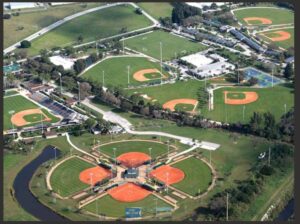
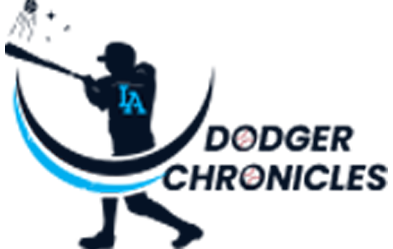


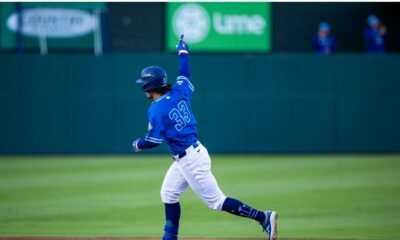



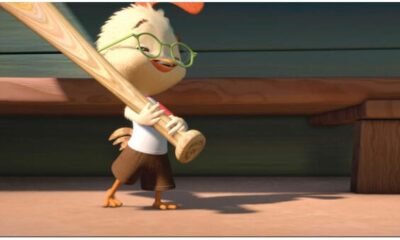





Great article Bear. I wish I had had the chance to go there. I went to umpire’s school in the Tampa/St. Pete area back in the mid-’70s but didn’t last long enough to visit Vero.
Thanks Fred. Watching a game the other day I flashed back to watching them play at Vero in the spring. They would only broadcast a couple of games, but it looked like a great place to watch a game. One of the house parents at the home for kids I lived at in the 60’s was a huge Dodger fan who at the time lived in Connecticut. He and his wife used to go down to Vero in the 40’s. He had a whole box of photo’s taken of the players and the fields. One’s I could readily identify were Reese, Reiser, Furillo, Hodges. It was cool to look at those.
I’m sure that box of photos, wherever they are today, would be a treasure trove.
I was lucky enough to visit Doger Town for several years. The first time I was living in Oregon and one of my memories was the smell of grass and sunshine. I saw two games and walked the complex thoroughly.
I had a good seat between home and first but it was in the sun and hot. Several line drives came into the seats and one hit a lady and caused her to have to get medical attention. It wasn’t relaxing so I walked over to the area behind home plate that was in the shade and with plenty of empty seats.
I sat behind Sandy Koufax and watched the game.
Vero Beach was special.
So you think Ángel Hernández is a bad umpire. Check this out.
“After a thorough review of the New Orleans and Mississippi Valley State baseball contest on March 10, 2023, the Southland Conference confirmed the home plate umpire’s conduct and actions were deemed detrimental to the conference and in violation of Section 3 Character and Conduct of the CCA Mechanics Manual for Baseball,” the conference said in a statement.
“As a result, the umpire has been removed from the series and has been suspended indefinitely from Southland Conference baseball games.
That is downright despicable. But I do not think Angel Hernandez is a bad umpire. I think he is the WORST umpire in the majors, and what is worse, he still has a job. MLB has to be careful about firing him. He already filed a racial discrimination claim against them.
Spite
Trayce launched a homer in yesterday’s team Britain loss to the US. He also had a double and did not strikeout in four at bats at Chase Field. All the Dodger players there got loud ovations when introduced. Must have been a lot of blue in the stands.
Outman has options but Heyward is signed to a minor league contract with maybe a predetermined release date if he is not added to the 26. Is he willing to play minor league ball for a month to see how things shake out on the 26?
Freddie Freeman has a pretty swing.
Great article Bear. Brings back many fond memories. I was fortunate enough to go to ST at Dodgertown 8 times between 1988 and 2000. I took the same baseball each year from 1992 to 1996 and got all the Rookies Of The Year to sign it. Brett Butler was my favorite player back then and he was awesome with the fans.
Another highlight was meeting Ralph Branca. I just happened to be wearing my Brooklyn cap that day and he signed it. He was a true gentleman. My biggest regret was not getting a Don Drysdale signature. I figured I had plenty of time.